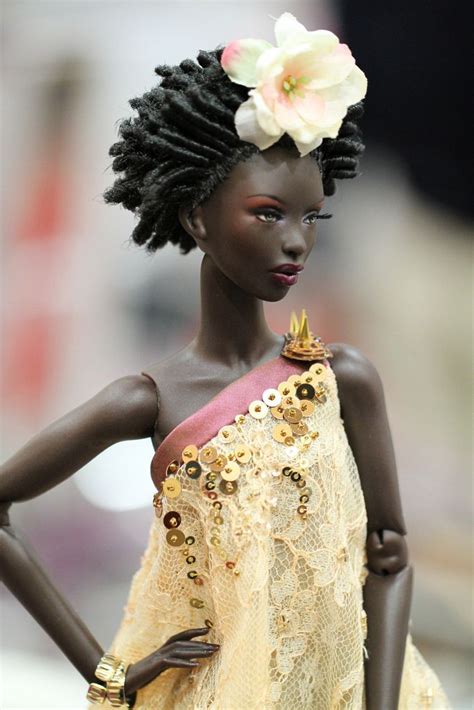Introduction

Barbie dolls have been a staple in the toy industry for decades, captivating generations of children with their iconic blonde hair, pink outfits, and glamorous accessories. However, in recent years, there has been a growing demand for Barbie dolls with diverse features, including black hair.
This article explores the history, significance, and impact of Barbie dolls with black hair. We will discuss the various types of Barbie dolls with black hair, their cultural representation, and their positive influence on children’s development.
History of Barbie Dolls With Black Hair
The first Barbie doll with black hair was created in 1968 as part of the “Colored Francie” line. This doll featured a brunette complexion, blue eyes, and long, straight black hair. The doll was initially marketed to African American children, but it was not widely accepted by the general public.
In 1980, Mattel released the “Black Barbie” doll, which had a darker skin tone, brown eyes, and curly black hair. This doll was more successful than its predecessor, and it helped to establish Barbie as a more inclusive brand.
Since then, Barbie has released a wide range of dolls with black hair, including dolls with different skin tones, hair textures, and facial features. Today, Barbie dolls with black hair are a common sight on toy shelves and in the hands of children around the world.
Cultural Representation
Barbie dolls with black hair have played an important role in promoting cultural representation in the toy industry. By creating dolls that reflect the diverse racial and ethnic backgrounds of children, Barbie has helped to normalize the idea of beauty in all its forms.
Studies have shown that children who play with dolls that resemble them are more likely to develop positive self-esteem and a sense of belonging. Barbie dolls with black hair can help to empower children of color by showing them that they are valued and represented in the world around them.
Benefits of Barbie Dolls With Black Hair
In addition to promoting cultural representation, Barbie dolls with black hair offer a number of other benefits for children:
-
Imaginative play: Barbie dolls with black hair allow children to explore their own identity and create stories that reflect their experiences.
-
Cognitive development: Playing with Barbie dolls can help children develop their problem-solving skills, creativity, and language skills.
-
Social development: Barbie dolls can help children learn about different cultures and perspectives, and they can also encourage empathy and cooperation.
-
Emotional development: Barbie dolls can provide comfort and companionship for children, and they can also help children to express their emotions.
Types of Barbie Dolls With Black Hair
Mattel has released a wide variety of Barbie dolls with black hair over the years. Some of the most popular types include:
-
Original Black Barbie (1980-1983): This doll had a darker skin tone, brown eyes, and curly black hair.
-
Totally Hair Barbie (1992): This doll had long, flowing black hair and a variety of hair accessories.
-
Magic Moves Barbie (2005): This doll had a darker skin tone, brown eyes, and long, curly black hair. She could also dance and sing.
-
Made to Move Barbie (2016): This doll had a darker skin tone, brown eyes, and long, straight black hair. She had 22 points of articulation, making her easy to pose.
-
Curvy Barbie (2016): This doll had a darker skin tone, brown eyes, and long, curly black hair. She had a more curvy figure than traditional Barbie dolls.
Table 1: Types of Barbie Dolls With Black Hair
| Doll | Skin Tone | Eye Color | Hair Color | Hair Texture |
|---|---|---|---|---|
| Original Black Barbie | Darker | Brown | Black | Curly |
| Totally Hair Barbie | Lighter | Blue | Black | Long and flowing |
| Magic Moves Barbie | Darker | Brown | Black | Curly |
| Made to Move Barbie | Darker | Brown | Black | Straight |
| Curvy Barbie | Darker | Brown | Black | Curly |
Conclusion
Barbie dolls with black hair have come a long way since their introduction in 1968. Today, these dolls are widely accepted and celebrated, and they play an important role in promoting cultural representation and empowering children of color.
As the toy industry continues to evolve, we can expect to see even more diverse and inclusive Barbie dolls with black hair. These dolls will continue to inspire children for generations to come.
Additional Resources
- Barbie’s Black History
- The Cultural Significance of Black Barbie Dolls
- The Benefits of Playing With Dolls
